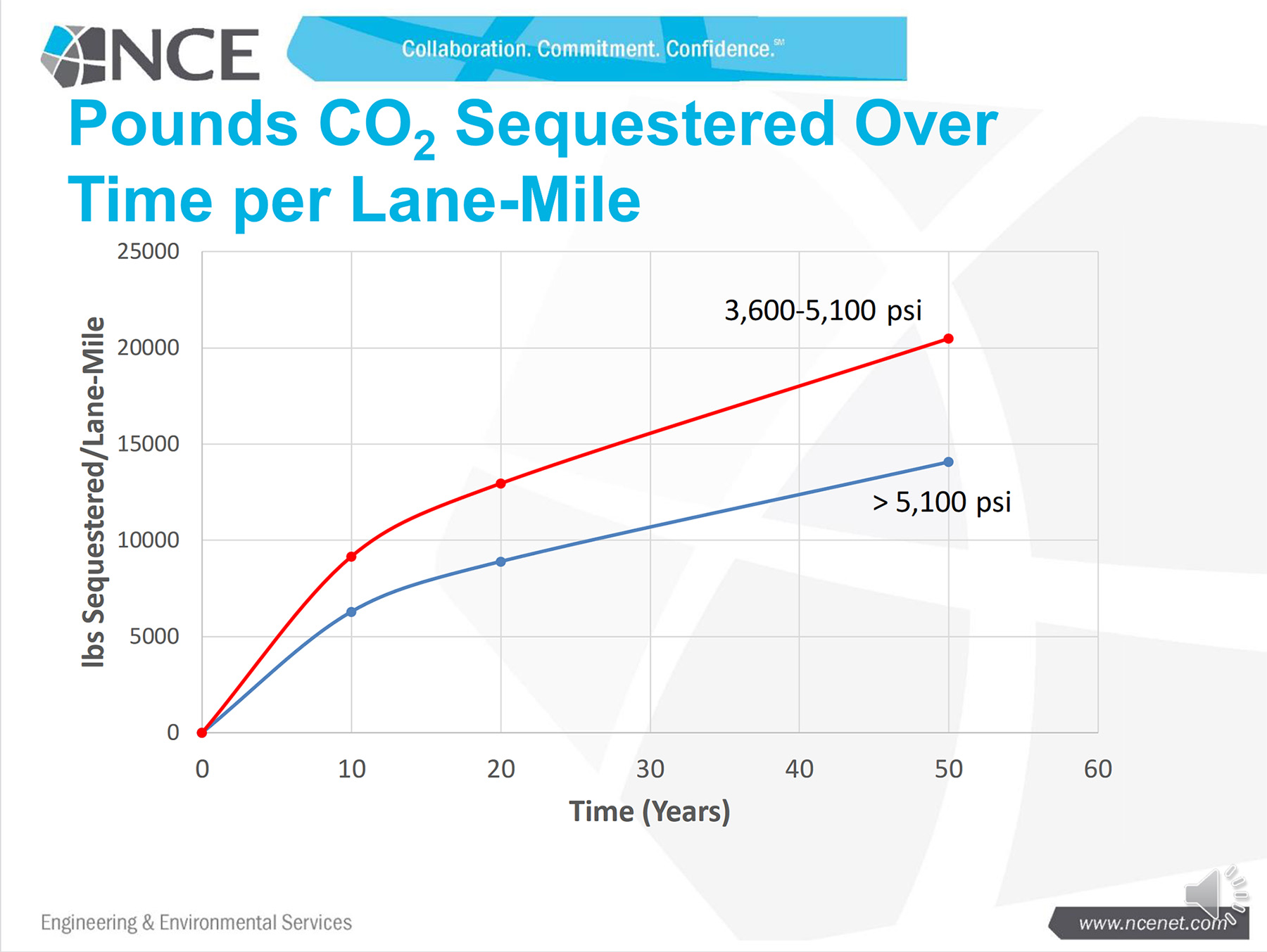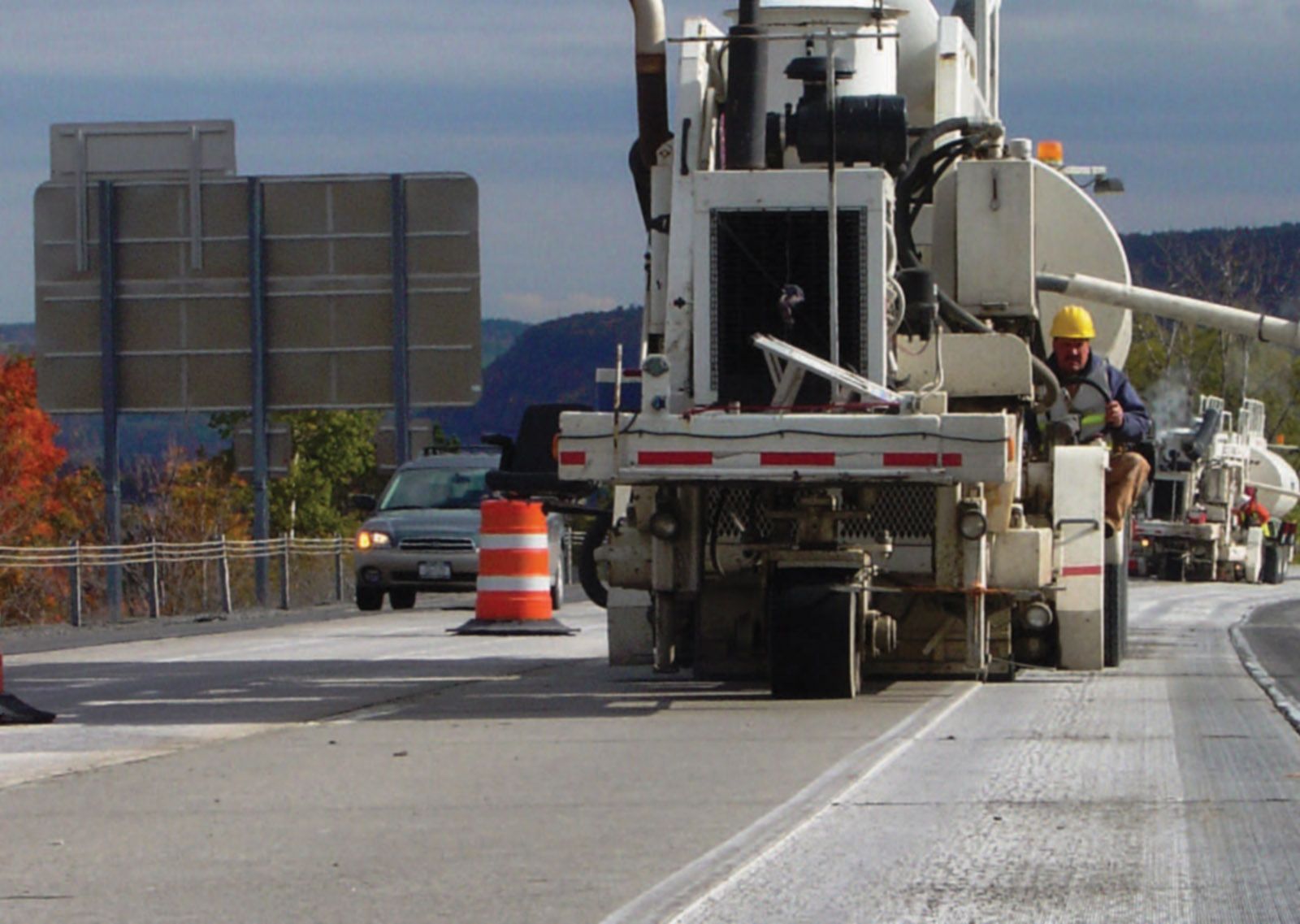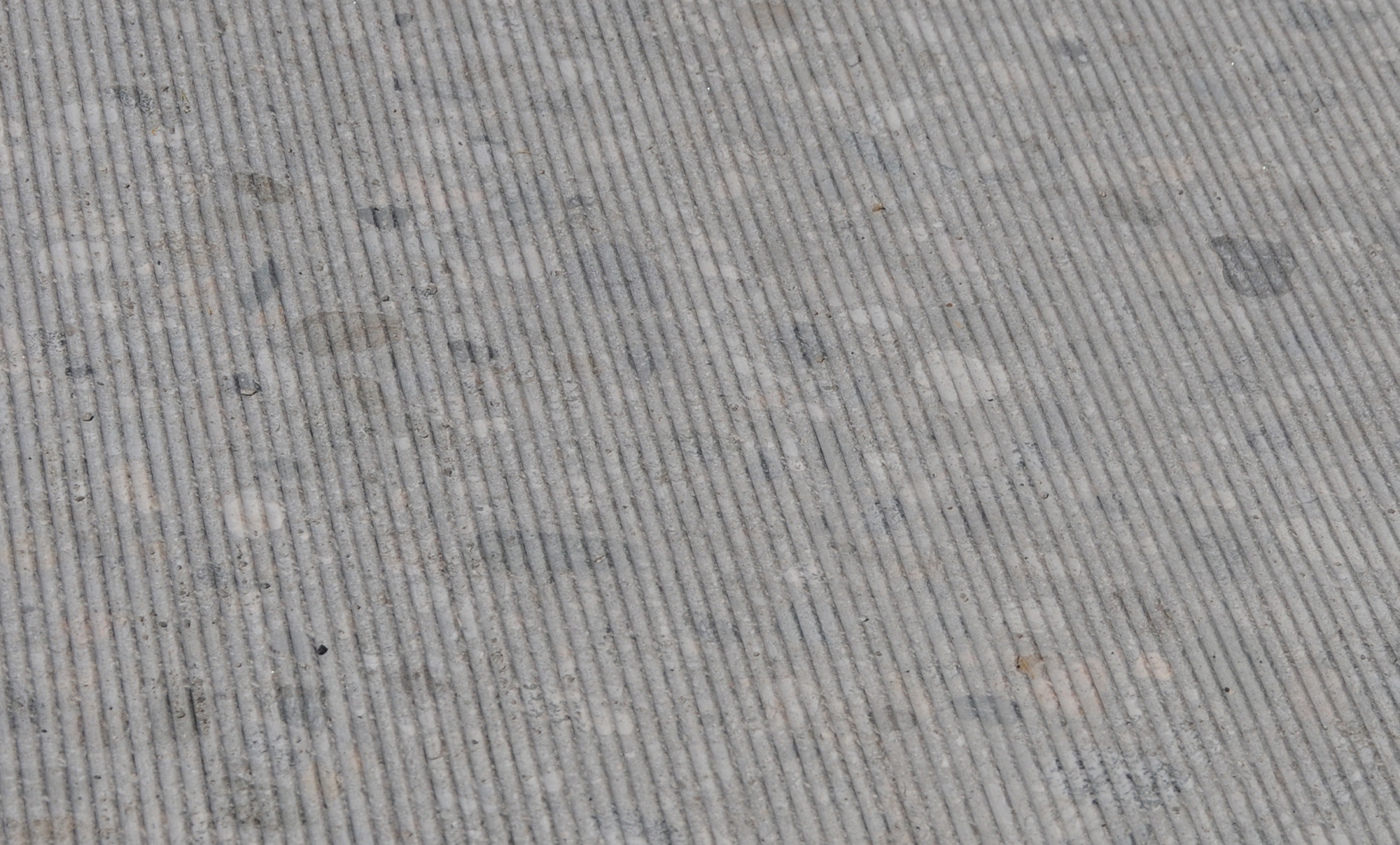Concrete captures carbon, and over time, is enhanced by diamond grinding.
Research from multiple sources, such as “Concrete Pavement Preservation and Climate Change” by Tom Van Dam, Ph.D., P.E., Principal, NCE, and “Carbonation As a Method to Improve Climate Performance for Cement Based Material” by R. Anderson is demonstrating how diamond-ground concrete is an excellent sustainable pavement choice.
Components of a fresh concrete surface (predominantly calcium hydroxide) chemically react with atmospheric carbon dioxide in a process known as carbonation, forming calcium carbonate (limestone). This carbon capture effectively sequesters carbon, removing it from the atmosphere.
Over time, however, the calcium carbonate begins to fill up void space, as it has a higher volume than the original calcium hydroxide. This “pore-blocking” effect slows the penetration of carbon dioxide into the concrete, so the rate of carbonation decreases.
However, there is a simple solution to increase the efficiency of carbonation – diamond grinding. The process refreshes the pavement’s ability to capture carbon by reopening the pore structure and creating more surface area. Compare this pavement rehabilitation method to asphalt overlay, which shuts down future carbonation, and the choice is clear.
For a great one-two sustainable punch, diamond grinding of concrete pavement should be performed with high priority as a maintenance treatment. Along with optimizing the carbonation of the pavement surface, the diamond grinding creates improved smoothness of the roadway, thereby improving friction, increasing vehicle fuel efficiency, and reducing vehicle-emitted carbon dioxide. There really isn’t a more sustainable way to maintain and improve pavements.
To read more about the process and its benefits, here’s the link to Tom Van Dam’s study, “Concrete Pavement Preservation and Climate Change.” https://www.freewaynoise.com/_files/ugd/72aeb3_522140de12e24f75ad04495797c14c29.pdf
To go into scientific depth, the academic paper, “Carbonation As a Method to Improve Climate Performance for Cement Based Material” by R. Anderson presents research to quantify the (re)carbonation performed by built concrete products over their lifecycle. https://www.sciencedirect.com/science/article/pii/S0008884619301929





